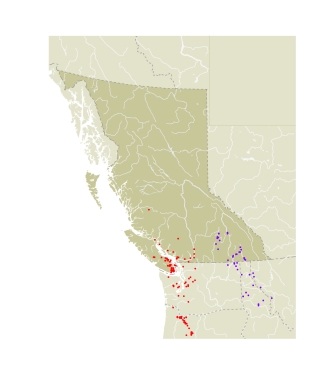Adults of the Cedar Hairstreak fly from late April to early June on the coast and mid-May to late June in the interior. Lab-reared individuals emerge as early as February (FIS), which shows that emergence is temperature-dependent. On Vancouver Island, the Cedar Hairstreak can be seen nectaring on English daisies, oxeye daisies, and native composites. Eggs hatch shortly after being laid and quickly complete development. By midsummer the mature larva has pupated. The butterfly overwinters as a pupa. Western red cedar is the main native foodplant (Guppy 1954; Johnson 1976; FlS), and CSG has reared both mainland and Vancouver Island populations on both western red cedar and Rocky Mountain juniper. Shepard has noted oviposition on horticultural juniper shrubs at Nelson.
|
|
